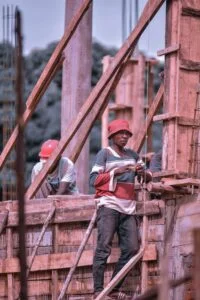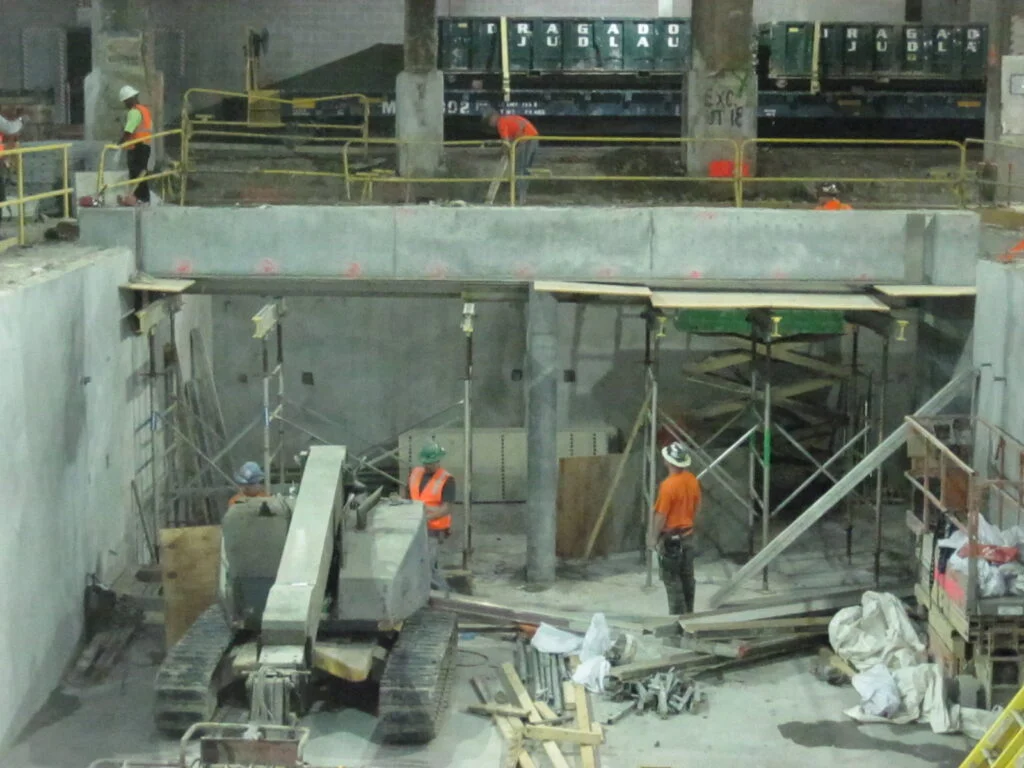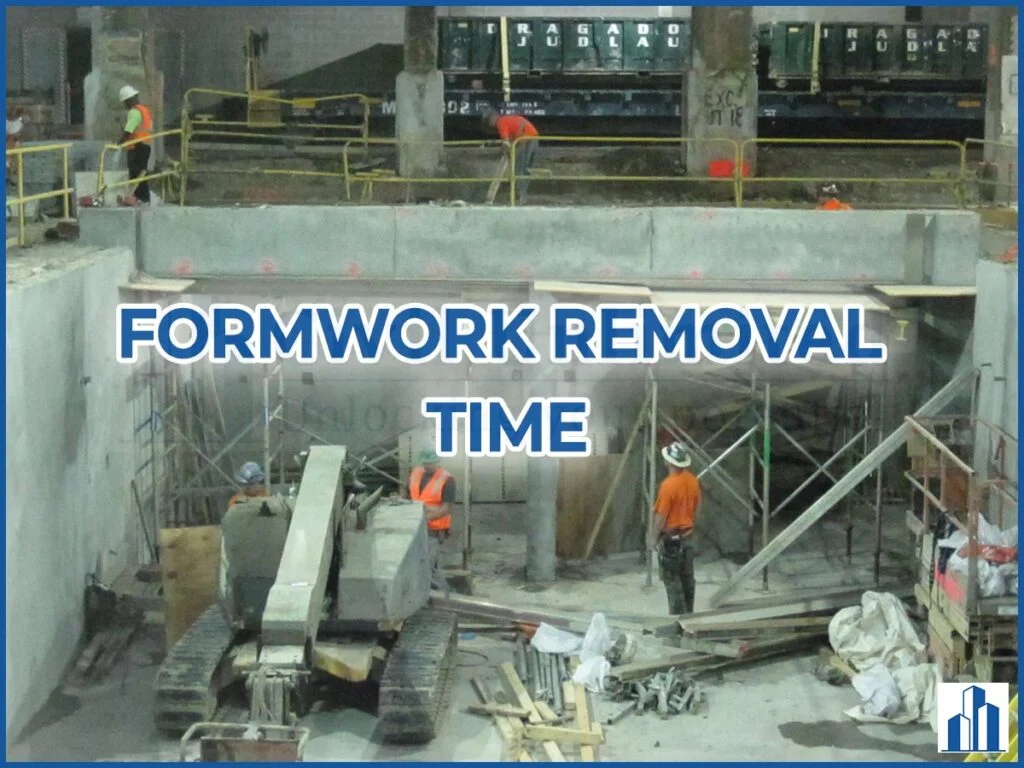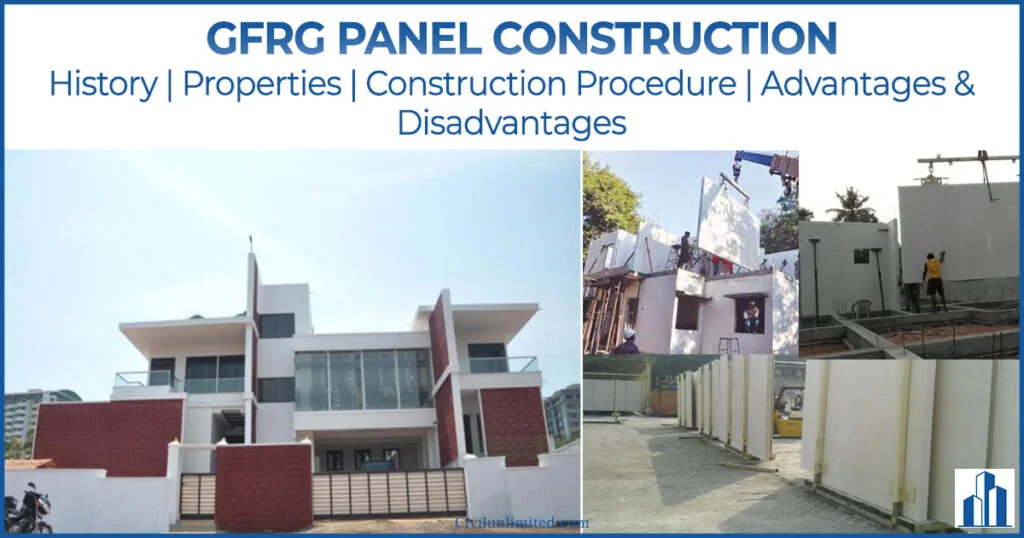What is the formwork?
A formwork is a temporary structure that is designed and constructed to hold the fresh concrete in place during the process of placing, compacting, and curing until the concrete attains sufficient strength to hold its shape and weight.
Formwork is commonly made of,
- Timber – These are generally used for small-scale constructions.
- Steel – These are generally used for medium and large-scale constructions.

What is deshuttering or stripping of formwork?
The process of removal of formwork is known as deshuttering of formwork (or) stripping of formwork (or) striking of formwork. It is to be done only after the poured concrete develops sufficient strength to support its own load and any other live loads experienced during construction.
The time from which the concrete is placed in formwork till the time the formwork is removed is called as supporting period.
During this period concrete will undergo a process called curing. The concrete attains its strength during the curing process. However the curing process can be affected by various parameters, some of them may fasten the curing process while others may delay it.
By affecting the curing period, it can also affect the stripping time of formwork. Some of the factors are listed and discussed below.

Factors Affecting Formwork Removal Time
The formwork removal time depends on the characteristics of the concrete. The characteristics of concrete may be influenced by the,
> Grade of concrete – The higher the grade of concrete, the higher the rate of strength development, hence requiring less supporting period.
> Types of cement – Chemical compositions in the cement can also affect the rate of strength development. For example, Rapid hardening cement requires a minimum period before striking formwork as compared to OPC (Ordinary Portland Cement).
> Ratio of concrete mix – Rich mix concrete can gain strength earlier when compared to the lean mix ratio one. Hence the concrete member made of rich mix requires a minimum supporting period.
> Weather condition – The hydration process accelerates in hot weather conditions when compared to cold or humid weather conditions. So, the formwork for concrete members in hot weather conditions can be removed early when compared to the one in cold weather conditions.
> Curing method – If we employ methods like accelerated curing, then the formwork removal time may be reduced.
Why formwork removal time is important?
From the general point of view, it seems that why we focus so much on this, instead of just keeping it for an extra week. The problem is that the hydration reaction of cement is not an instantaneous one, it occurs rapidly at the starting stage and slowly decreases over an indefinite period of time.
About 50% of the total strength is achieved within 3 days in the case of normal cement. Hence, keeping the formwork longer doesn’t make any sense, it can only increase the costs of the construction.
And also without removing the formwork, we can’t go to the next stage of the construction. Hence it delays the project further.
Considering all the situations, it is best that we keep the formwork only for the required minimum number of days.
When to remove concrete formwork?
You can calculate the minimum period before striking the formwork in two ways.
1) By knowing the strength of concrete
If you deal with any important structures or any large-scale projects, it is advisable to go for any reliable data before striking the formwork.
For this, we need to find the strength of the concrete. This can be found by one of the following methods,
- Maturity of the concrete method,
- By performing any Non-Destructive Tests (NDTs),
- By performing a concrete cube compressive test on one of the samples that is prepared during the process of concreting.
When you know the strength of the concrete, you can refer to the following table.
| Concrete Strength | Structural member |
| 2.5 N/mm2 | Lateral parts of the framework for all structural members can be removed |
| 70% of design strength | Interior parts of formwork of slabs and beams of span up to 6m can be removed |
| 85% of design strength | Interior parts of formwork of slabs and beams of span more than 6m can be removed |
2) By referring to the codal provisions
Most of the time, you can’t go wrong by following codal provisions.
As per IS 456:2000, when Ordinary Portland Cement (OPC) is used in an environment having a temperature of 15°C and above, the following minimum period can be adopted.
| Type of formwork | Formwork removal time |
| Removal of vertical formwork to columns, walls & beams (Props have to be refixed immediately after removal of the formwork sheet) | 24 – 48 hours |
| Removal of bottom formwork to slabs (Props have to be refixed immediately after removal of the formwork sheet) | 3 days |
| Removal of bottom formwork to beams (Props have to be refixed immediately after removal of the formwork sheet) | 7 days |
| Removal of Props to slabs : | |
| 1) Slab spanning up to 4.5m (~15 ft) | 7 days |
| 2) Slab spanning over 4.5m (~15 ft) | 14 days |
| Removal of Props to beams and arches : | |
| 1) Beam & arches spanning up to 6m (~20 ft) | 14 days |
| 2) Beam & arches spanning over 6m (~20 ft) | 21days |
Note :
1) When Portland Pozzolana Cement (PPC) is used, the removal time will be 10/7 times the above-specified table.
2) When Low Heat Cement (LHC) is used, the removal time will be 10/7 times the above-specified table.
3) When Rapid Hardening Cement (RHC) is used, the removal time will be 3/7 times the above-specified table.
However, in all cases, the vertical side of the formwork should at least be kept for 24 hrs.
What happens if you remove the formwork early?
If you remove the vertical formwork early, without allowing the concrete to harden, then there may be a higher chance for the concrete to bulge in lateral direction, develops cracks and sometimes even may collapse.
However, it is worst in the case of flexural members such as slabs or beams because they are subjected to construction loads along with their dead load, hence if you remove the formwork or support very early, it may have been subjected to extreme deflection (or) in some worst case, it may collapse and become a disaster.
Hence, it should be mandatory for the site engineer to,
- Check the formwork before concreting to make sure that it is strong enough to withstand both the construction loads and dead loads.
- Make sure the concrete gets minimum time for hardening before striking the formwork.
Hence, a site engineer should have good knowledge about the formwork removal time.
Maintenance of formwork
As soon as the formwork is removed, all the chippings of concrete and sawdust must be removed from the interior surface of the formwork and the formwork should be piled up and covered with canvas.
In the case of steel formworks, the interior surface of the formwork should be treated with any releasing agents such as oil to prevent it from getting rusty.
Wood formwork has a limited number of reuses compared to other materials of formwork. Hence make sure, whether it is eligible for any reuse purposes.
Hope you understand everything you need to know about the concrete formwork removal time. If you have any queries (or) if you find this article helpful, let us know in the comment section.
Read more: Plane Table Surveying – Instruments, Setting up, Advantages & Disadvantages, An Ultimate Guide For Mixing Of Concrete.




Good post. I’m facing many of these issues as well..